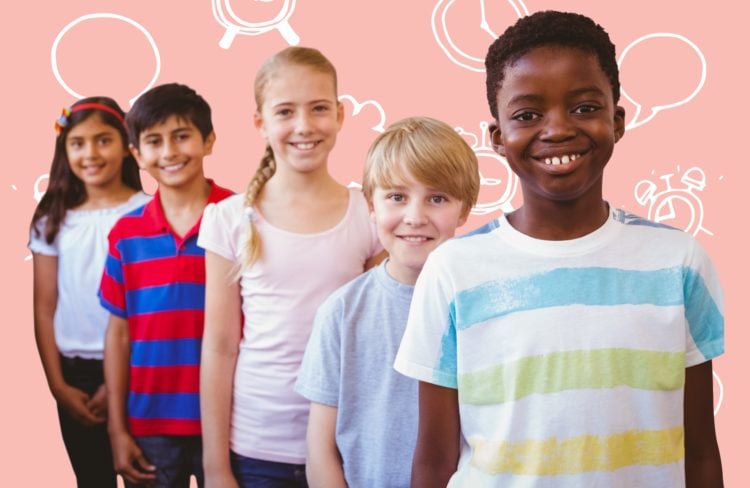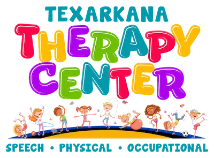
Article by: Lori Beth Stewart, M.A., CCC-SLP
Hello! Today we will be talking about core words. Basically, core words are the most useful, easily generalized words we have access to. It is beneficial to start with core words when teaching kiddos with complex communication needs because core words can be used across a variety of daily activities. In this blog post, we will define core words, discuss core vs. fringe words, explain why core words are important, and discuss how to teach them.
What Are Core Words?
Core words are the set of words that make up the majority of the words we use to communicate. Although experts disagree on the exact amount of words that are in this set, it is agreed that we can communicate most of what we want to say with the same 50-400 words (Marden, 2015). Core words are general words that are useful across all situations; specific nouns like “banana” and “elephant” are not included in this list. If I wanted to build a sentence with only core words it may sound a bit choppy but you would be able to understand the meaning. We can even use core words to describe the specific nouns if we need to. For example, if I wanted to communicate “I see the elephant running in the zoo” using only core words it might look like this “I see big gray animal going fast in there.” For your convenience, a list of 100 high frequency core words compiled by the AAC Language Lab is available here, 100 High Frequency Words. This list is not all-inclusive by any means, but it is a good starting set. You will notice that it is split into different parts of speech and while there is a category for pronouns, there are no nouns in this list whatsoever.
Core Words vs. Fringe Words
To better understand what core words are, we will also define and give examples of what fringe words are. Fringe words are typically nouns that are also context-dependent and specific. If you want to teach a child one new word when going out for ice cream you could choose a fringe word like “ice cream” or you could choose something more general like “eat” or “cold.” If the child is typically developing then this choice may not impact their language skills greatly because they can learn one of these three words one day and learn the other two over the next two days or so. However, if this particular child has a language disorder then it may take significantly longer for this child to start spontaneously using one of these new words. Teaching the word “eat” to a child with a language disorder will be more functional than teaching “ice cream” because it can be taught and used every time they eat. Also, this word may be more motivating than “ice cream” if the child’s favorite snack is something else, like goldfish.
Why are Core Words Important?
In the last example we touched on why core words can be important for building the language skills of individuals with language disorders and/or other complex communication needs. I am not claiming that fringe words are never important – because they are. To be clear, I am stating that core words can be a better starting place for children who may take longer to learn words. Core words are a key strategy especially for individuals who are learning to communicate with Augmentative and Alternative Communication (AAC). AAC is any form of communication that is used instead of or in addition to verbally speaking. It can take many forms, including writing a message on a piece of paper, typing a message on a keyboard, touching picture symbols on a high-tech speech-generating device, touching picture symbols on a low-tech communication board made up of symbols, and/or gesturing to something you want.
Teaching core words to individuals using AAC is key because they are often limited by how many words they have access to at one time, especially when they are just starting to use AAC. So, if an SLP is deciding whether a child will have access to 10 core words or 10 fringe words to get started, they may choose 10 core words because those words are more powerful, will help the child communicate in a variety of situations, and it is easier to combine core words to make a sentence than it is to communicate a sentence using only 10 nouns. Additionally, focusing on core words can empower AAC users to communicate things besides requests (“I want the toy” or “I want the cracker”). Although requests are important, it is also important to give them access to words like “help” in case they are in an emergency, “like” to build a social interaction around topics they enjoy like foods they like, and/or “all done” to refuse something that they do not want to do.
An example of a low-tech core communication board is provided here (Communication Board for Core Words). You’ll find that all of the symbols/words on that board are basic core words that can be modeled, taught, and used across a variety of situations. They are also color-coded based on their different parts of speech (yellow for pronouns, green for verbs, pink for prepositions, purple for question words, red for negation, and blue for adjectives). This isn’t just a pretty design choice – research indicates that color-coding on communication boards can make finding the target word/symbol easier for the communicator especially if the color-coding system is consistent across all of their modes of communication (Zangari, 2013). Next, we will discuss how to teach and model these 10 core words in a variety of situations and how to use these words to build long-term language skills.
Teaching Core Words
As with teaching any word, children benefit from multiple exposures to the word in a variety of situations and environments as well as with different communication partners. So, ideally, a child will be exposed to the word “go” at least three to five times in one situation (such as making a wind-up toy go in their speech therapy session), at least three to five times in another situation (playing with toy cars at home with mom), and at least three to five times in a third situation (riding around in the toy car with dad in the driveway or backyard). All of these interactions can conceivably take place in one week which means the child has heard and hopefully felt and seen what “go” means about 9-15 times. If you are using AAC with this child then you will just say the word verbally AND touch it on the device or low-tech communication board while the child is watching. Here is a sample interaction for teaching “go”
Speech therapist (ST) gets out a cool new wind-up toy for a little boy named Joe who is using the low-tech communication board linked here (link Basic Core) to learn core words.
ST: Oh wow! Look at that! It’s a toy. I’m gonna make it “go!” [models word on communication board]
Joe: watches ST wind up the toy
ST: Here it “goes!” [models word on communication board]
Joe: smiles and claps hands as he watches the toy move
ST: Oh no! Look, it stopped. Hmm, should I make it “go” [models word on communication board] again?
ST hovers over the word “go” on the communication board to see if Joe will touch it to request go and also watches his face to see if he is trying to say the word go.
Joe: touches the communication board but does not quite touch the correct word (“go”)
ST: Yes! We want him to “go” [models word on communication board]
ST: Lets the toy go and says “go, go, go” Look at him “go!” [models word on communication board each time it is said verbally]
The most important thing to remember with teaching communication is to reward any and all attempts to communicate. If you want to learn more about encouraging all forms of communication, you can check out this blog post about total communication: What is Total Communication? Another example of modeling core words and rewarding communication attempts is available here (video link). The last thing for today’s blog post is providing a few more activities/situations for how you can start using core words. The following are activities specific to each of the core words on the low-tech core communication board provided at the end of this post. I hope the information provided today was useful to you and I encourage you try using and teaching core words if you have a child with a language disorder. Feel free to ask your speech-language pathologist for more information about core words and core word activities
Article By: Lori Beth Stewart, M.A., SLP-CCC
